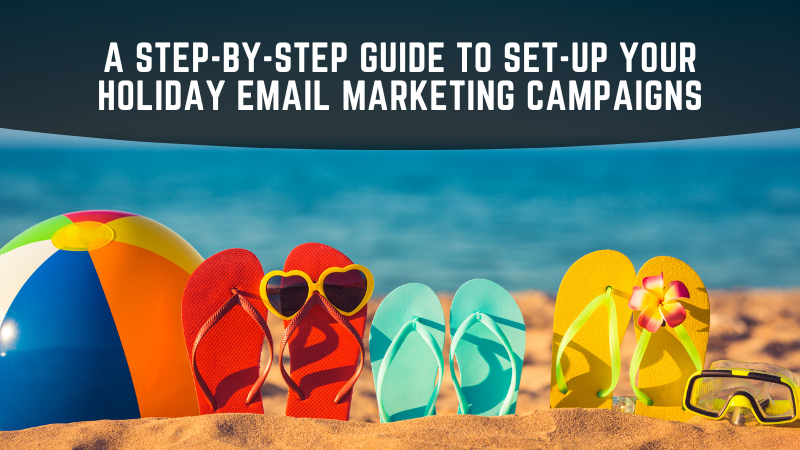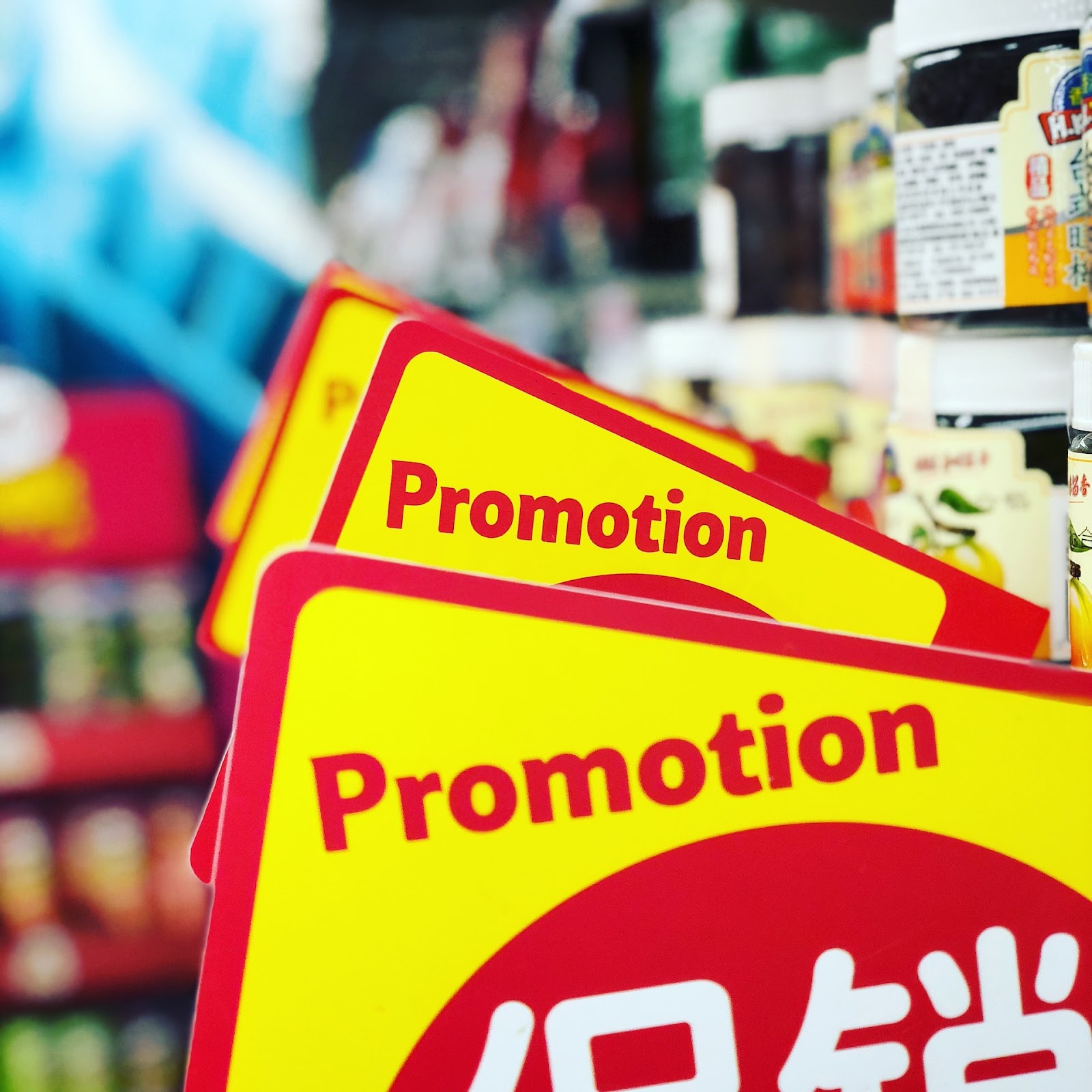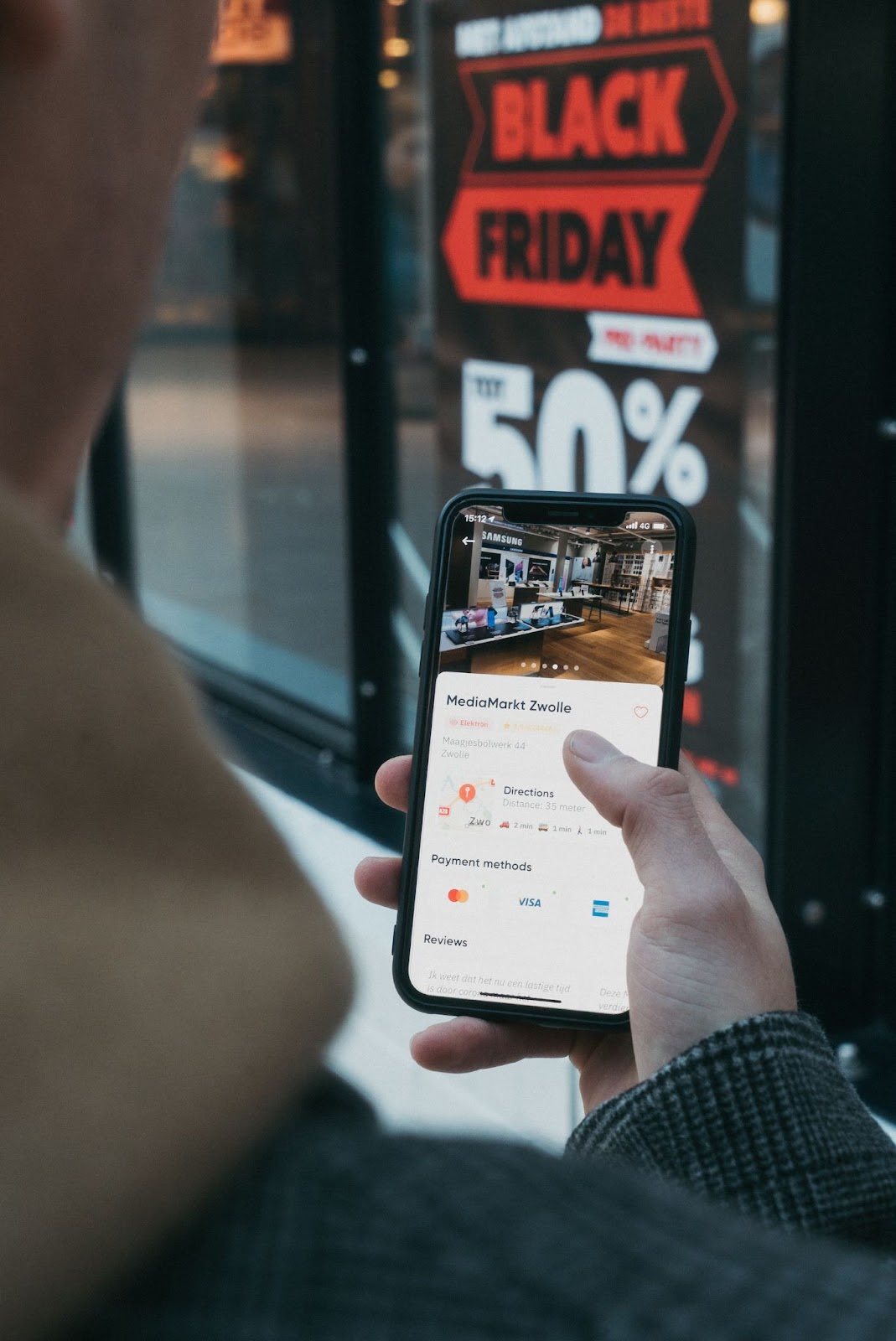
For retailers, mid-October to January marks a spike in consumer shopping corridor. For many business owners, the period between Halloween and New Year’s will produce the year’s highest sales.
According to Deloitte, ecommerce is projected to grow 12.8% to 14.3% compared to the 2021 season. Another report by Adobe forecasts a $209.7 Billion Holiday Season Online in the U.S, with Cyber Monday expected to hit $11 billion.
Company owners and marketers must put their best foot forward and employ the most effective strategies to engage consumers at this time. According to a recent survey, email marketing becomes more effective at the end of the year, and consumers seek discounts in their inboxes.
As the season of merry shopping approaches, email marketing campaigns are a straightforward way to let customers know about sales, discounts, and other specials you’ll be running.
This guide explores how to leverage email marketing during the holiday season and increase ROI on your marketing efforts.
Why is Email Marketing the Best Holiday Marketing Tool for Brand Building and Upsell/Cross Sell?

Email marketing can boost holiday sales and maximize revenue before the new year. Many shoppers can end up purchasing after opening a retailer’s email. As such, email marketing specialists leverage this season to boost sales for businesses.
The following are some main benefits of email marketing:
- Improve Brand Recognition: Email marketing lets you reach a bigger audience. It makes your efforts more effective by focusing on a specific demographic and makes it more likely that someone will buy from you.
- Increase Your Business Income: Holiday marketing rewards brands’ efforts with significant income and improved reputation. In addition, it provides customers with exceptional deals and gifts and evaluates the company’s capacity for expansion and change. Fever on Black Friday and Cyber Monday is an actual test for businesses.
- Retain Current Customers: Studies indicate that gaining a new customer costs five times as much as keeping an old one. The holiday season brings opportunities to show your customers you appreciate their patronage.
Why Is Email So Effective?
With email marketing, you can inform customers of the discounts and special offers you’re running in the hopes that they’ll return to the site and make a purchase. Attract new clients by offering promotional discounts and holiday deals. Then, advertise after the holidays to convert first-time buyers into repeat clients. Here are a few ways to make your emails more effective.
- Personalized: Personal emails are perfect for interacting with clients individually and giving them a sense of value. They allow you to contact leads and customers directly in the faceless world of social media.
- Effective: Over 99% of email users check their inboxes daily, so thoughtful holiday marketing may be all that is required to get customers to buy something.
- Cost-effective: Email marketing has the potential to boost earnings when executed properly. The ROI for email marketing campaigns is $42 for every $1 spent.
- Data-driven: One of the best aspects of email marketing is that it allows you to try out various strategies with no risk. By segmenting your clientele, you may tailor your marketing to reach them better.
What Types of Email Can You Send for a Holiday Campaign?

Here are a few types of content to make your holiday marketing emails stand out in the crowd (and customers’ inboxes!) more effectively:
1. Gift Guides
Holiday gift guides are digital compilations of a brand’s top e-commerce products that help customers make thoughtful holiday selections.
Early October through December are bustling with curated holiday gift guides because of Black Friday, Cyber Monday, and the December-January Winter Holidays. Depending on your e-commerce site, Mother’s Day or the Fourth of July may also be great for gift guides. Many customers use retailers’ and e-commerce websites to find Christmas gift ideas. As such, online retailers need gift guides to attract shoppers and usher in the holidays.
When producing a Christmas gift guide, companies should consider the following:
- Target customers, one-time buyers, or demographics: Consider how they might locate a gift guide and their pricing or product preferences.
- Relevant sales data, such as year-round and Christmas best-sellers: It would help if you also analyzed customer spending trends.
- Current consumer trends: This might assist you in finding your target market’s favorite products. Understanding these trends will improve your gift selections.
- Target-group-specific pieces or instructions. A featured section may feature best-selling things everyone likes. In contrast, the top gifts for kids’ section may cater to parents.
2. Announcement of Sales and Discounts

You must carefully organize your promos to execute a successful holiday marketing strategy.
You can utilize a wide variety of holiday promotions:
- Discounts: The most typical holiday promotion is giving attractive discounts. You can offer a rebate that works immediately or needs a unique code.
- Freebies: Companies commonly provide freebies when customers purchase a certain quantity of a specific item at checkout. Another possibility is that the purchaser may get the item for free.
- Two for the price of three: This deal usually includes specific requirements for what products and how many of them a customer must purchase to qualify for a free item.
- Exclusive access: Businesses frequently give email subscribers or VIP members free access. This type of promotion can help you grow your email list.
- Bonus or incentives: Several businesses offer boosted rewards for holiday purchases.
- Free Delivery: You can even provide free shipping if you sell tangible goods over the holiday season.
- Giveaways: A giveaway is a great idea over the Christmas season. Choose what your customers will get in exchange for specific actions (likes, comments, reshares, etc.).
3. Holiday Cards
Sending holiday cards is a small act of kindness that can significantly impact a customer’s loyalty. And it’s common knowledge that a company’s ability to retain customers is crucial.
You can stay in touch with a client and thank them for doing business with your company without giving them a sales deck. They are a quick and considerate way to let clients know you are thinking about them over the holidays.
However, ensure that you send personalized holiday cards. The recurrence of cookie-cutter cards is always a concern. Customers could get the same Christmas e-Greeting from a different business they work with.
What Key Elements Should You Include in a Holiday Email?

When creating your holiday email marketing strategy, remember the thousands of other offers from competitors. A well-written email fosters interaction, builds trust, and stands out in the Christmas advertising sea.
You can use professional services to create a custom email template for various occasions.
An engaging email should have the following properties:
- Use Attention-Grabbing Subject Lines: Attention-grabbing subject lines are crucial to your business since that’s what your customers see when they open your email. They should be short (4–7 words), direct, with no more than three punctuation marks, and use emojis sparingly when appropriate.
- Details in the header: An email’s preheader, often known as the preview text, is an extended subject line. In a nutshell, this content is the first few words of your email campaign. Keep the preheader to 35 characters or less to ensure that people can see them on most mobile devices.
- Keep the message concise: The text of this email should make your message as easy as possible for your audience to understand. Make sure the writing is engaging, fascinating, and simple to read. Explain the service, emphasize any potential benefits for the client, and provide instructions on how to continue.
- Images: Any holiday email marketing campaign’s effectiveness depends on the images’ utilization. They provide an immediate sense of familiarity and make the message memorable.
- A call to action: The area of your email where you tell recipients what to do next is called the “call to action.” It’s best to avoid confusing language and specify the actions you want them to take to carry out your request. Call-to-action phrases include things like “Buy a Gift Card Today,” “Check Out Our Gift Ideas,” and “Explore Our Holiday Gift Guides.
Send the email to yourself once you believe you’ve straightened everything out so that you can review it on various devices and email clients.
5 Steps to Begin Your Holiday Email Marketing Strategy
Email marketing is straightforward once you get the planning right. Follow these steps to get started:
1. Decide on a Theme for Your Campaign
While creating content daily for most inbound marketers, launching a campaign requires different skills. Unlike tweets or infographics, marketing campaigns need you to plan your media around a single goal or message.
Holiday campaigns, like most campaigns, only run for a limited time. Depending on your industry, they can begin as early as October and last well into January. Build a holiday theme around the special days in this period.
2. Set Goals for Your Campaign
What is the aim of the campaign? You can create goals to gauge the success of your campaign once you’ve determined your target audience. Your objectives must be SMART (Specific, Measurable, Achievable, Relevant, and Time-bound). A model goal structure is shown below.
Lead by [date], [number], [topic/product]
The objectives of your campaign could be:
- Create 2,000 holiday sales leads by December 10th, 2022.
- Get 5,000 web app sign-ups by November 30th, 2022.
Ensure you connect your marketing to SMART objectives. Using the above template, you can specify marketing requirements, set dates, and define targets.
3. Define Your Target Market
Next, decide who your target market is. It is better to know more about your audience. What websites do they have? Mobile or desktop? When you plan promotions and make content, you’ll be able to make better marketing decisions.
Focus on the few buyer personas you already have. Did everyone see your advertisement? If not, remove any you don’t want.
If you need to create buyer personas for specific campaigns, you can use many free buyer persona templates online. Building and organizing persona data is made simpler by such methods.
4. Create an Offer
All of your campaign activities will revolve around the offer that you develop. eBooks, discounts, videos, whitepapers, tools, templates, online courses, and more are common recommendations. You can also use digital e-gift cards. Many options are available, but it’s best you stick with the strategy that makes the most sense for your target audience.
5. Create a Landing Page
Once you’ve made your offer, you must give it a home. This is the importance of a landing page.
Given that this is the page to which you will direct traffic, it must be persuasive. The following are some of the essential elements you must include:
- Appealing headline: This is how you will attract the attention of potential visitors. Ensure the headlines are clear, and avoid using jargon and metaphors.
- Captivating images: Your landing page should not consist solely of text. Consider how you could use visuals to support your argument.
- The benefits of your proposal: Typically, this appears as a bulleted list. The goal is to emphasize to the visitor what they can expect from this service and why it is crucial.
- A form: This is how you will collect data in exchange for the offer. Keep in mind that there is no magic number for form fields. The amount of information required on a form varies from company to company. However, avoid requesting information if you do not need it.
What Time of the Year Is the Best to Start Your Holiday Campaign?

Buyer behavior change over time. Some years may be different from others. For instance, the 2022 holiday shopping started earlier. A survey by Bankrate shows that twenty-five percent of shoppers plan to begin shopping as early as September. Another 25% expect to start in October. Only 40% of respondents plan to start buying for the holidays in the year’s final two months. Preparing on time is essential because sales begin quickly, and people want the best deals possible.
Black Friday and Cyber Monday are undoubtedly the beginning of the holiday sales surge. Find below how to make the most of these two events to boost your sales:
1. Black Friday and Cyber Monday Holiday Sales Kick-Off
Black Friday and Cyber Monday are the holiday industry’s official start of the Christmas shopping season. As the holidays get near, it’s time to start thinking about how to attract customers best. So, it is an excellent time to deploy dedicated email campaigns and get the best of the holiday season.
In 2021, internet sales for Black Friday topped $8.9 billion, while Cyber Monday purchases raked in $10.7 billion, according to Adobe Analytics. These are staggering figures that demonstrate the continued success of the internet retail industry.
These are the busiest days for sales in November, but they are by no means the only ones. Besides Christmas, there are other holiday shopping opportunities, such as Singles’ Day, Thanksgiving, and Small Business Saturday.
Black Friday and Cyber Monday (BFCM) email blasts are most effective when sent out immediately following Halloween. Customers searching for sales should start shopping for Black Friday specials at least a week or two ahead of the actual day.
High open rates can be expected around noon, when people are most likely to check their mobile inboxes and engage with promotional messages.
2. Christmas
Most people agree that November’s first and second weeks are the best times to send out pre-Christmas email campaigns.
The Christmas season officially begins on December 22, and open rates decline dramatically. This trend will continue until the beginning of the New Year.
The click-through rate drops on Christmas Eve and Christmas Day but is at an all-time high. You might also want to send a post-Christmas newsletter blitz to take advantage of sales after the holiday season ends. Starting your holiday email marketing campaign late evening will help you avoid competition.
3. Holidays and the New Year
Email marketing is most effective once the holiday rush dies down. Low open rates persist at the start of the New Year, though engagement does increase slightly between January 5th and January 8th. Email marketers can use this trend to their advantage by sending out newsletters that give hints about products coming out soon.
Tips to Boost Your Email Marketing Game for the Holidays
You and nearly every other consumer-oriented business employ email marketing, a tried-and-true method, to gain an edge during the intensely competitive holiday shopping season. When sending holiday marketing emails to customers, how can you make yours stand out from the myriad of other messages they will receive? How do you get new customers and current ones to come back?
Here are some tips to improve your holiday email marketing.
1. List Segmentation
Using marketing automation and follow-up emails, you can keep leads interested in your business and bring them closer to making a purchase.
You should review your list of potential segmentation opportunities before designing emails and workflows. To avoid holiday inbox chaos and help people see the value of your emails, divide your list of leads into groups. That way, you can send more relevant emails.
Segmenting may not seem daunting once you start tracking data like which pages your subscribers visit and which products they buy. The more you know about your recipient’s tastes and interests, the easier it will be to send them holiday emails that are more likely to result in conversions.
Your brand’s relationship with seasonal customers is unique from that of regular customers. Your future follow-up campaign should be based on the person’s needs and motivations.
Customers who rely heavily (or solely) on discount codes can be efficiently engaged as they are likely your most price-conscious clientele. In the same way, segmentation can help ensure subscribers who are willing to pay the full price don’t get discounts.
2. Use Scarcity or Urgency
Words like “last chance,” “only a few left,” and “limited stocks” are guaranteed to increase the heart rate of any online shopper. Customers’ anxiety about missing out on limited-time offers and other enticements can be stoked by playing on their sense of scarcity and urgency. As a result, this strategy is excellent for increasing revenue. Consumers feel a sense of urgency to buy from you because they miss out on the juicy deals.
Scarcity elements like countdown clocks, special discounts for a limited time, etc., are common among marketers. Even displaying the small size of your store’s supply of goods can be convincing. Your customers won’t procrastinate as long as they know you’re down to the last few items.
3. Use Automated Holiday Email Campaigns
You can send holiday marketing emails automatically through automation tools. Once you’ve established your automation workflows, your campaigns will proceed.
Email automation tools have many applications, including speeding up responses to customer inquiries. Automation is most commonly associated with advertising, but it also serves a vital purpose in customer service, especially during the busy shopping season. There is a way to answer customer questions via email automation. For instance, customers can get automated emails in response to their queries, welcome emails when they sign up for your offer, or even thank you emails.
Create drip email campaigns to gradually increase the time a customer spends in your email marketing funnels. Since you’ve established credibility with your readers, they’ll be more receptive to the recommendations you make in your holiday email campaigns. Use ActiveCampaign to send your holiday newsletter and automate your drip email campaigns. It’s simple to set up automated processes with its drag-and-drop automation builder.
4. Send Personalized Holiday Email Campaigns
Your holiday email marketing campaign’s success depends heavily on personalization.
Creating dynamic content based on what your subscribers want and need is a surefire way to stay ahead of competitors.
Ask them what they want or expect to see in your Christmas emails if you don’t have any behavioral data to base your offers and deals on.
Refresh the information in your prompted emails.
What happens if someone registers to receive your emails during the holiday season? They won’t want to receive your standard welcome letter, will they? Don’t let your new subscribers miss out on seasonal discounts and special offers.
5. Make Your Emails Mobile-friendly

Your marketing efforts, not just those you do for Christmas, should be mobile-friendly. Mobile consumers drive ecommerce. Reports show around 4% sales conversion rate in the last six months. Because of this, it’s crucial to ensure your holiday email marketing efforts are compatible with mobile devices. Unfortunately, all the hard work can be unsuccessful if your emails have poor load or response time. Therefore, code your emails to offer a seamless experience. For this, you can get a third party to help you design a responsive mail that encompasses the following:
- Themes that adapt to different screen sizes while keeping the most important information visible.
- Optimized photos to look beautiful and load quickly because slow-loading material will turn off mobile users.
- Prevent receivers from being confused by missing information, write succinct subject lines or ensure the primary data is at the beginning.
- Check how your messages appear on the mobile devices that your customers are using is an efficient way to test your holiday email marketing plans.
Use responsive templates that can change the size to fit various screen sizes. Improve the photos’ appeal and loading speed by optimizing them. And lastly, write concise but attention-grabbing subject lines, starting with the essential details.
6. Focus on the Customer
During the Christmas season, marketers often send more emails than usual. But keep in mind that a receiver is a real person.
Everyone is busy during Christmas, so they might not like having their inbox filled with emails trying to sell something. Respect their time while using a sensible, client-focused strategy. In addition, rather than advancing your sales throughout the holidays, you should find out what your subscribers want from you.
In Conclusion
The holiday season is quickly approaching. And shoppers can’t wait to get the items on their long wish lists. Now is a great time to step up your Christmas email marketing strategies to bring more customers into your sales funnels.
Remember to pay attention to your readers’ feelings and focus the content on how your products can help them spread happiness through the gifts they buy from you. A straightforward holiday message will help you win back your clients’ confidence. Also, take care of your timings and details.
The tips in this email marketing guide will help you step up your online marketing strategies and boost sales this holiday season.
